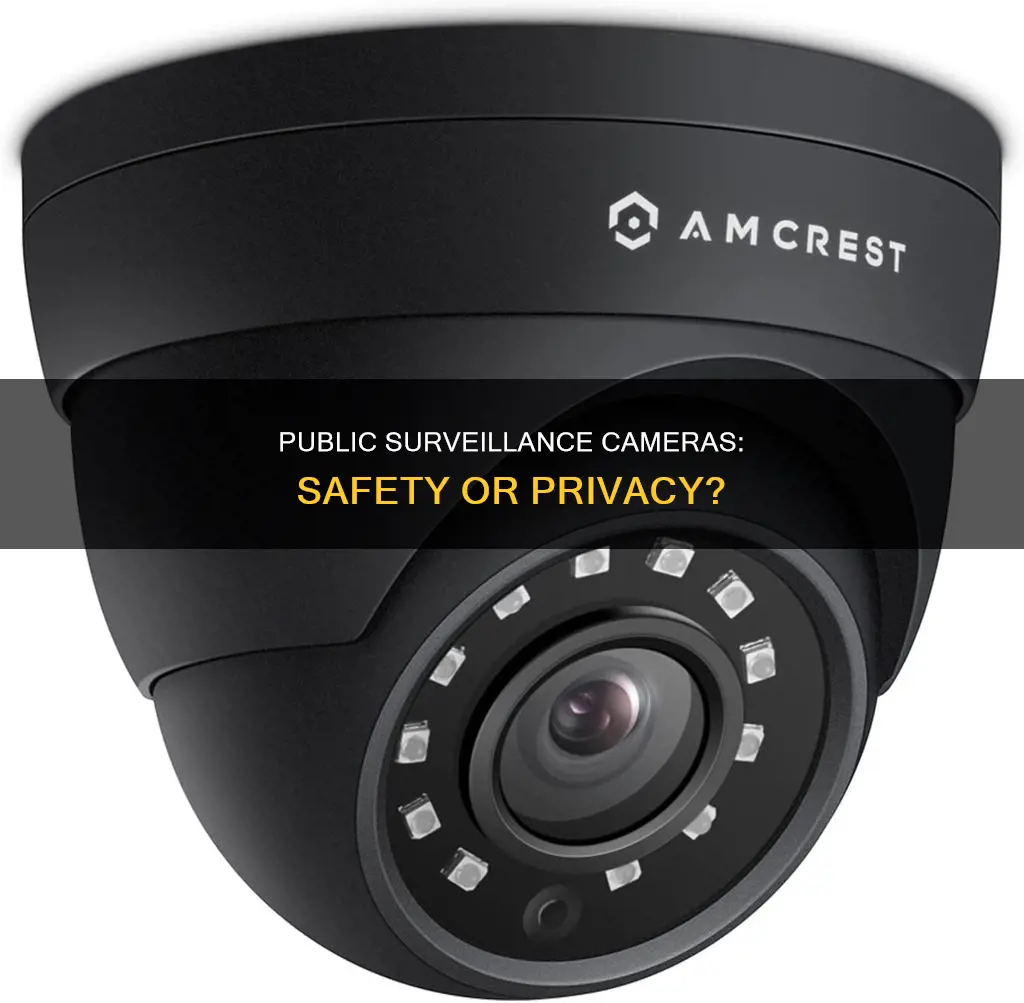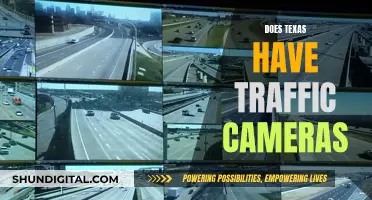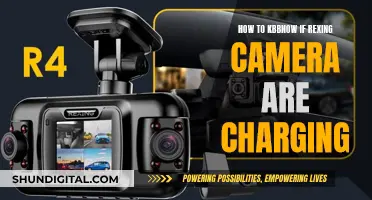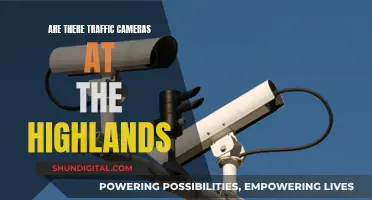
Public surveillance cameras are a double-edged sword when it comes to safety. On the one hand, they can deter criminal activities and help solve crimes by providing valuable evidence. They also monitor areas for potential hazards and keep a watchful eye on crowds, ensuring safer public spaces. However, the very presence of these cameras invades privacy, and their effectiveness is questionable in the face of determined criminals or in the case of a stabbing in New York. The debate around public surveillance cameras is ongoing, with no clear-cut answer to whether they make us safer.
| Characteristics | Values |
|---|---|
| Crime prevention and deterrence | Surveillance cameras deter criminal activities such as theft, vandalism, and assault. |
| Crime investigation and evidence gathering | Surveillance cameras help law enforcement agencies investigate and solve crimes by providing video evidence. |
| Public safety and emergency response | Surveillance cameras monitor areas for potential hazards, such as fires or floods, and assist emergency responders in assessing situations. |
| Crowd control and management | Surveillance cameras provide real-time information to authorities to manage crowds and enable effective traffic control. |
| Civil liberties and privacy concerns | Surveillance cameras raise concerns about civil liberties and privacy, with some arguing they are an invasion of privacy. |
| Cost-effectiveness | Surveillance cameras can be costly to implement and maintain, with debates around their effectiveness in preventing crimes. |
What You'll Learn

Crime prevention and deterrence
Public surveillance cameras are an effective tool for crime prevention and deterrence. They act as a visual deterrent, making potential offenders think twice before committing a crime. The presence of cameras can reduce the likelihood of crimes such as theft, vandalism, and assault. For example, after the installation of security cameras in Humboldt Park, crime incidents dropped by 20%.
Surveillance cameras also aid in identifying and apprehending criminals, as well as gathering evidence for investigations. Facial recognition software has improved significantly, making it easier for law enforcement to recognize and catch criminals. Additionally, video evidence can serve as proof of alibi or refute an alibi claimed by a criminal.
Furthermore, in the event of a crime, surveillance footage is crucial for a police investigation, especially when there are no eyewitnesses or when eyewitness accounts are unreliable. This was evident in the Boston Marathon bombing, where investigators identified the suspects by sifting through video footage captured by the city's cameras.
The use of surveillance cameras in public places has sparked debates about privacy and civil liberties. While some argue that cameras invade privacy, others feel more secure with their presence. However, it is important to note that public surveillance does not always prevent crimes, as seen in a case where a man was stabbed in front of three surveillance cameras in New York.
To conclude, public surveillance cameras play a significant role in crime prevention and deterrence. They deter potential offenders, aid in criminal investigations, and provide valuable evidence. However, the benefits of increased security must be balanced with the right to privacy to ensure responsible and ethical use of surveillance technology.
GoPro's First Steps: The Original Camera's Story
You may want to see also

Gathering evidence for investigations
Surveillance cameras in public spaces can be a valuable tool for gathering evidence during investigations. They can provide a detailed record of events, helping investigators to identify suspects, understand the sequence of events, and gather clues. This can be particularly useful in cases where eyewitness testimony is unreliable or contradictory.
For example, in the case of a robbery, a surveillance camera may capture clear images of the robber's face, which can be used to create wanted posters or aired on television to help identify the suspect. Similarly, in assault cases, CCTV footage can be used to identify the assailant and provide evidence of the attack. In both these scenarios, the presence of video evidence can make the difference between a successful conviction and an unsuccessful one.
Surveillance cameras can also help investigators to understand the context of a crime. For instance, by reviewing footage from before, during, and after an incident, investigators can identify potential motives, track the movements of suspects, and gather information about their accomplices or victims. This can be crucial in building a strong case and ensuring that justice is served.
In addition to their use in criminal investigations, public surveillance cameras can also provide evidence in civil cases or be used to support insurance claims. For example, if a car accident occurs, footage from a nearby camera can help determine who was at fault, or if a property is damaged, cameras can help identify the perpetrators and provide evidence for insurance claims.
However, it is important to note that the effectiveness of surveillance cameras as an investigative tool depends on several factors. These include the quality and positioning of the cameras, the lighting conditions, and the frame rate of the footage. If any of these factors are inadequate, it can compromise the usefulness of the footage and hinder the investigation.
Sony Camera Production: Where Are They Made?
You may want to see also

Monitoring public safety and emergency response
The use of public surveillance cameras is a highly debated topic, with valid arguments for and against their implementation. While some view them as an invasion of privacy, others feel safer with their presence. In the context of monitoring public safety and emergency response, public surveillance cameras offer several advantages:
Deterring Crime and Enhancing Safety
Public surveillance cameras act as a deterrent to criminals, making them less likely to commit offences in areas under surveillance. This helps reduce the overall crime rate and enhances public safety. Cameras can be strategically placed in areas with high crime rates, thus proactively preventing crimes before they occur.
Real-time Monitoring and Emergency Response
Surveillance cameras enable authorities to monitor public spaces in real-time, allowing for prompt detection and response to incidents such as accidents, crimes, or natural disasters. This real-time monitoring improves situational awareness, facilitates faster emergency response, and enhances the overall effectiveness of emergency management.
Evidence Collection and Investigation
Surveillance footage provides valuable evidence for investigations, helping law enforcement identify and capture criminals. It also assists in refuting or supporting alibis and can be used as evidence in court. This leads to a more efficient justice system and ensures that criminals are brought to justice.
Crowd Management and Public Event Safety
In crowded public events, festivals, or gatherings, surveillance cameras help monitor crowd density, flow, and behaviour. By analysing data from cameras, authorities can detect overcrowding, identify potential safety risks, and manage crowd movements to prevent stampedes and address crowd control issues.
Integration with Other Technologies
Public surveillance cameras can be integrated with IoT devices, body cameras, panic buttons, and smartwatches used by emergency responders. This integration provides real-time data and situational awareness, improving the effectiveness of emergency responders and ensuring their safety during critical operations.
Improved Traffic Management for Emergency Services
Surveillance cameras, in conjunction with intelligent traffic management systems, can dynamically adjust traffic signals and optimise routes for emergency vehicles. This expedites their response time, enhances emergency medical services, and improves overall emergency response efficiency.
While public surveillance cameras offer these benefits for monitoring public safety and emergency response, it is essential to address valid concerns regarding privacy, cost, and potential abuse of surveillance footage. Striking a balance between public safety and personal privacy is crucial, and proper regulations and guidelines should be in place to govern the use of surveillance cameras.
Displaying Gridlines: Camera Raw's Secret Weapon
You may want to see also

Crowd control and management
The Los Angeles Police Department (LAPD) provides an illustrative example of how surveillance technology can aid in crowd control and management. The LAPD employs a surveillance system that includes high-definition cameras capable of streaming video to a remote command post. This system offers agility and flexibility, making it suitable for use in densely packed, large-crowd events. The cameras provide critical, real-time information on crowd size, behaviour, and trends, enabling commanders to make informed decisions and take swift action if needed.
Surveillance cameras can also assist in monitoring suspicious behaviours and detecting potential threats within crowds. Facial recognition technology, for instance, enables law enforcement to identify individuals in a crowd by matching their facial biometric information against existing databases. This technology proved valuable during the Occupy LA movement, where the LAPD had total situational awareness of the park occupation and could ensure the safety of protestors and officers alike.
Additionally, object recognition, enabled by artificial intelligence (AI) and computer vision, can identify different types of objects in a scene faster than human operators. This capability enhances security by quickly identifying high-risk items within large crowds.
The benefits of surveillance technology in crowd control and management extend beyond security. Cameras can help with traffic and transportation management by monitoring passenger flows and providing data to reduce congestion. They can also aid in identifying government personnel who are shirking their duties or engaging in rent-seeking behaviour.
However, it is essential to acknowledge the concerns surrounding privacy and the potential for abuse that comes with the increasing use of surveillance technology in public spaces. The intense invasion of individual privacy through constant surveillance could have serious consequences on people's freedom and sense of security.
To balance these concerns, appropriate laws and guidelines are necessary to ensure the rightful use of the vast amount of private data collected through public surveillance. This includes implementing penalties for misuse, such as heavy compensation for individuals whose data is misused, and promptly destroying data that is no longer required.
Camera Battery Grips: Are They Worth the Hype?
You may want to see also

Protecting the innocent
Public surveillance cameras are a highly debated topic, with some advocating for their ability to protect the innocent and others expressing concerns about privacy invasion. Here are some key considerations regarding how public surveillance cameras can help protect innocent individuals:
Deterring Criminal Activities
The presence of surveillance cameras in public places can act as a deterrent to potential criminals. Individuals intending to commit crimes such as theft, vandalism, or assault may be discouraged from doing so if they know they are being watched and recorded. This reduces the likelihood of innocent people becoming victims of such crimes.
Solving Crimes and Identifying Perpetrators
Surveillance cameras provide valuable evidence in the event of a crime. They can help law enforcement agencies identify and apprehend criminals, ensuring that innocent individuals are not wrongly accused or suspected. This was evident in the Boston Marathon bombing, where surveillance cameras played a crucial role in quickly identifying and apprehending the suspects.
Monitoring Public Safety and Emergency Response
Surveillance cameras are not just useful in crime detection and prevention but also in monitoring public safety and emergency response. In case of emergencies like fires, floods, or terrorist attacks, these cameras can provide real-time information to authorities, enabling them to assess the situation and respond accordingly.
Crowd Control and Management
With increasing urbanization and crowded public spaces, surveillance cameras aid in crowd control and management. By providing real-time information to authorities, they can help manage traffic congestion and ensure the safety of individuals in crowded areas.
Providing a Sense of Security
For many individuals, the presence of surveillance cameras offers a sense of security. When walking or travelling alone, knowing that someone is monitoring the footage and can call for help if needed can be comforting.
While public surveillance cameras offer these benefits in protecting the innocent, it is essential to acknowledge the valid concerns surrounding privacy invasion and the potential for abuse of surveillance footage. Striking a balance between public safety and individual privacy rights is crucial to ensure that surveillance cameras are used responsibly and effectively.
Activating Galaxy Note 9's Sports Camera Modes
You may want to see also
Frequently asked questions
Yes. Public surveillance cameras can improve safety by deterring criminal activities and helping to identify and apprehend criminals. They can also be used to monitor areas for potential hazards and to ensure road safety.
Public surveillance cameras can help solve crimes by providing video evidence and protecting the innocent. They can also provide a sense of security and comfort to individuals, knowing that someone can call for help if needed.
Yes. Some people argue that public surveillance cameras invade privacy and civil liberties. There are also concerns about the potential abuse of surveillance footage and the effectiveness of these cameras in preventing crimes.
The use of public surveillance cameras has become increasingly common, especially in highly populated areas. According to estimates, there are around 5.2 million CCTV cameras in the UK, with one camera for every 13 people.
Most Americans believe that surveillance cameras reduce crime and increase public safety. However, some people still have concerns about being spied on.







